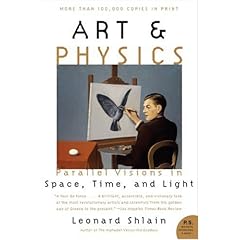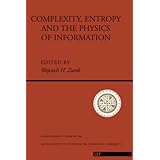
Thesis Post #5: Side Note:
originally posted 10/13/2008
If this matters at all, my process in reading all of my research material is...
1. Read a section
2. Highlight important info while reading
a. Rotate colors continuously for each new unrelated topic
b. Continue with the same color to indicate the topics are related
c. Thick line indicates most important info
d. Thin line indicates less important supporting info
3. Go back to beginning of section, take notes on highlighted text
a. Notes are usually either direct quotations, summaries, or charts
b. Not all highlighted info proves relevant to make notes of
c. Underline in notes the key words, phrases, concepts, etc that are the most important
4. Take a nap.
5. Start it all again with the next section till done!
6. If book or article did not have adequate intro or conclusion, might need to make additional summarization notes
___

Thesis Post #4: Pablo Picasso
originally posted 10/11/08

(This is a screenshot from "The Madonna of the Future: Essays in a Pluralistic Art World," however I first read this quote in "Creating Minds" by Howard Gardner.)
___

Thesis Post #3: Hermann Grid Illusions
originally posted 10/10/08


link
___

Thesis Post #2: books!!!
originally posted 10/9/08
(All of these can be found on Amazon.)
BOOKS I HAVE READ:
Creating Minds: An Anatomy Of Creativity As Seen Through The Lives Of Freud, Einstein, Picasso, Stravinsky, Eliot, Graham, And Gandhi
by Howard Gardner

___
Entropy and Art: An Essay on Disorder and Order
by Rudolf Arnheim

___
Powers of Ten (Revised)
by Philip Morrison

___
The Visual Display of Quantitative Information
Envisioning Information
Visual Explanations: Images and Quantities
Beautiful Evidence
by Edward R. Tufte




(to be fair, I did not read these 4 cover to cover)
___
*******
BOOKS I AM IN THE PROCESS OF READING:
Art and Visual Perception: A Psychology of the Creative Eye
by Rudolf Arnheim

___
Kant's Aesthetic Theory: An Introduction, Second Edition
by Salim Kemal

___
Eye and Brain: The psychology of seeing
by Richard L. Gregory

___
*******
BOOKS I HAVE, BUT STILL NEED TO READ:
Visual Perception: Physiology, Psychology and Ecology
by Vicki Bruce , Mark A. Georgeson, Patrick R. Green

___
Visual Intelligence: How We Create What We See
by Donald D. Hoffman

___
Art & Physics: Parallel Visions in Space, Time, and Light
by Leonard Shlain

___
Language and Symbolic Systems
by Yuen Ren Chao
___
*******
BOOKS I WANT TO READ, BUT DON'T HAVE:
Complexity, Entropy and the Physics of Information
by Wojciech H. Zurek

___
Visual Thinking
by Rudolf Arnheim

___
Toward a Psychology of Art: Collected Essays
by Rudolf Arnheim

___
New Essays on the Psychology of Art
by Rudolf Arnheim

___
Inner Vision: An Exploration of Art and the Brain
by Semir Zeki

___
*******
Side note: could the covers of these books be any more painful if they tried???
These are books about VISUAL perception!!!
Also, there are a few more books that I read this past summer and last year, but do not have the titles with me.
I can post those when I return to New York.
___

Thesis Post #1: Let's begin, shall we?
originally posted 10/9/2008
This blog is an attempt to keep track of research I am doing for my thesis project.
So far I've been writing everything out long-hand, and while I will continue to do so out of personal preference, I think this platform will be helpful to keep track of web links, online articles, relevant images, etc. (It is also way easier to decipher than my handwriting, and convenient for sending to teachers back home at Parsons that want to make sure I am actually doing work during my semester abroad.)
We'll see what direction this goes, but I have a feeling most of the posts will fall into some basic categories (not in order)...
1. Important relevant quotations
(which I may or may not elaborate on.)
2. Links to articles or websites.
3. Lists of other resources, i.e. books, academic journals, etc.
4. Short summaries of those book or articles
(if I read them so I can later recall what they were about.)
5. Short summaries of a particular expert's point of view or arguments.
(many of them are conflicting so it gets difficult to keep them all straight)
5. Relevant photos and diagrams
6. Possibly links to pdf or jpg scans of my long-hand notes
7. Whatever else I feel so inclined to include...
Please note that I am not a professional in this field by any means. If I make incorrect assumptions, draw false parallels between things, misquote, misinterpret, or do anything else wrong, please realize that fact. Also feel free to correct me.
If you have any feedback, questions, or want to get in touch with me for any reason at all, please email me at kailesmith@gmail.com.
___
p.s. The point of this blog is not to be pretty, it is to track my research, and possibly help other people who want to know more info on the topics I cover here.
Apologies if you find it boring, but I have a diff blog full of photos and design inspiration elsewhere.
___
No comments:
Post a Comment